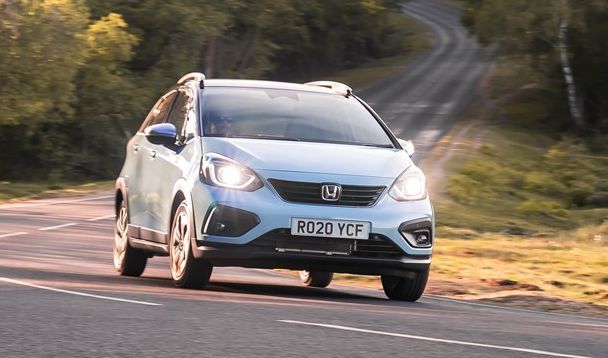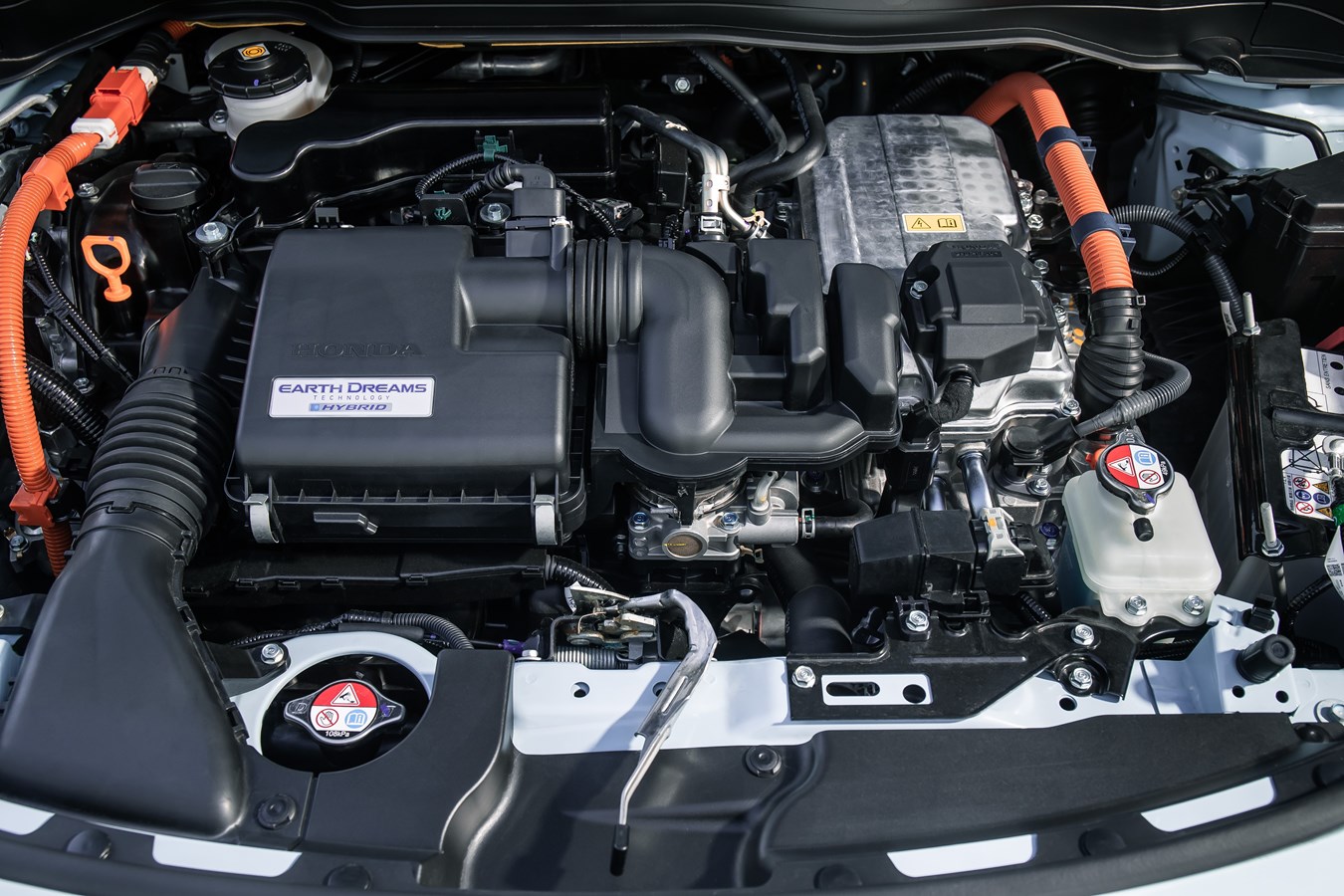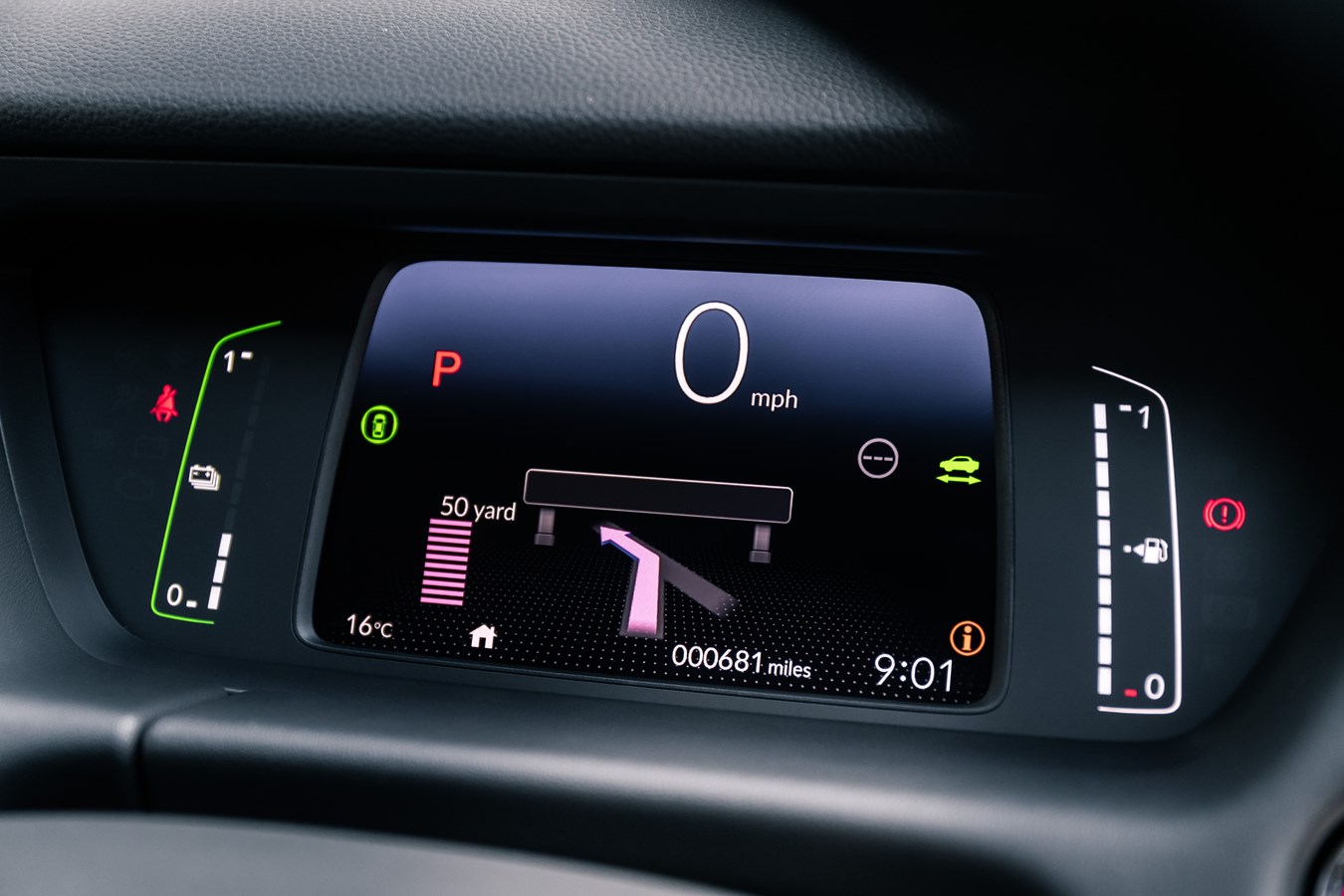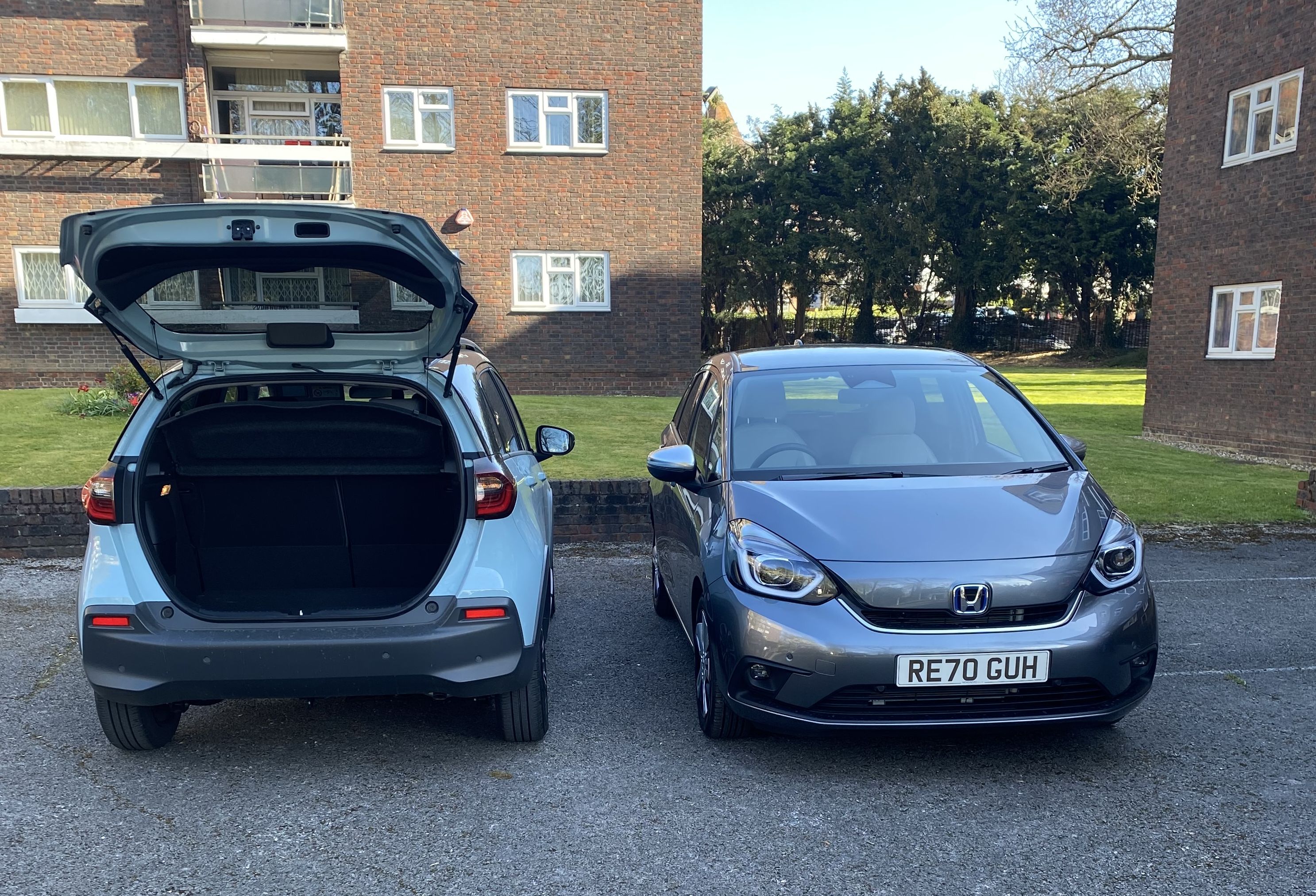14 JUNE 2021
YOUR WORDS
Readers are invited to add their comments to any story. Click on the article to see and add.
BTN DISTRIBUTION
BTN also goes out by email every Sunday night at midnight (UK time). To view this edition click here.
The Business Travel News
PO Box 758
Edgware HA8 4QF
United Kingdom
info@btnews.co.uk
© 2022 Business Travel News Ltd.
Article from BTNews 14 JUNE 2021
JUNE ROAD TEST: Honda Jazz. Two cars tested
What do you do when a car manufacturer offers you back-to-back tests of the same model but different variants? You take up both submissions and after a fortnight decide which one is for you. It’s not easy. Sad to say, the Jazz, which is the most popular of the Honda range in the UK, is no longer assembled at Swindon where the company, once only famous for superb motor bikes, still has a substantial operation. Multinationalism means that that companies are “persuaded” to build cars at sites with more attractive financial considerations. Well done to Nissan for sticking to Sunderland. The local football team – Stadium of Light and all that – can’t be the attraction!
Sad to say, the Jazz, which is the most popular of the Honda range in the UK, is no longer assembled at Swindon where the company, once only famous for superb motor bikes, still has a substantial operation. Multinationalism means that that companies are “persuaded” to build cars at sites with more attractive financial considerations. Well done to Nissan for sticking to Sunderland. The local football team – Stadium of Light and all that – can’t be the attraction!
Since 2001, and over three previous generations, the Honda Jazz has brought a unique approach to the compact city car market. Small does not have to mean impractical, and practical does npt have to mean predictable. Once inside it does not feel small at 4044mm long and 1694mm wide the narrowest in a class that includes the BMW Mini (3821mm x 1727mm) and Seat Ibiza (4059mm x 1780mm). In terms of quality Honda internal finish outshines. Nothing cheap about this car. Nearly two decades of constant development have resulted in the all-new Jazz and Jazz Crosstar models. Built around an all-new ultra-efficient hybrid Honda powertrain it offers exceptional levels of economy, performance and refinement.
Nearly two decades of constant development have resulted in the all-new Jazz and Jazz Crosstar models. Built around an all-new ultra-efficient hybrid Honda powertrain it offers exceptional levels of economy, performance and refinement.
Called the e:HEV system it is newly developed for the Jazz and engineered to deliver enjoyment to the driving experience. It comprises two energy-dense electric motors, a 1.5-litre i-VTEC petrol engine, a lithium-ion battery and an innovative fixed-gear transmission, which all work together to deliver the best ratio of fuel economy to produce what is the best acceleration in its class.
Where the two cars differ essentially is the body styling and the price. The Jazz EX came in at £22,735 including Pearl Paint £550. For the Crosstar version the total outlay was £24,585 including £1,200 for what is called “Surf Blue” paintwork. There are no extras, both cars very comprehensively equipped, including a heated steering wheel and all sorts of nooks and crannies for holding items needed on your travels.Both models have identical technical specifications with a practical 0-60 in of 9.4 seconds and sensible top speed of just over 100mph. No point in offering more. They cruise effortlessly at 70mph with a speed limiter for those very careful and adaptive cruise control plus a lane departure warning system. For reasons best known to Honda the blind spot monitor is on the Jazz version only. However the Crosstar has a ride height bonus. You notice the difference. Crosstar adds increased 30mm (1.1-inch) ride height, water-resistant upholstery and integrated roof rails.
The model's enhanced visual presence is also bolstered by a bolder front grille design, black cladding around the wheel arches and stylish side sills. The Crosstar-specific 16-inch silver and black alloy wheels create a sense of increased stability and complete the variant’s overall robust visual impact.
Once inside there is a sense of spaciousness in what is a small car with excellent all-round visibility. The impossibly thin A-pillars are the result of extensive crash test modelling and allow for unrivalled forward vision. The simple-to-use 9-inch LCD touchscreen interface is designed to minimise driver distraction; operation time for the most regularly-used controls is reduced says Honda by 58% compared with the previous model, providing a safer and more ergonomic experience. Garmin supply the navigation.
The simple-to-use 9-inch LCD touchscreen interface is designed to minimise driver distraction; operation time for the most regularly-used controls is reduced says Honda by 58% compared with the previous model, providing a safer and more ergonomic experience. Garmin supply the navigation.
Over decades Honda has been noted for its superb engineering. What the average owner will not see is the work done under the bonnet, including incorporating the air intake and components on top of the engine. This allows room for the electric motors (propulsion motor and generator) to be integrated into the engine compartment, as well as the power control unit (PCU), which is reduced by 20% compared with conventional technology. This also allows the auxiliary 12v battery to fit into the engine compartment, freeing up space at the rear. This clever packaging is made possible by using the newest semiconductors for the PCU. A key to maximising cabin room is the positioning of the fuel tank in the centre of the chassis beneath the front seats.  Boot space comes in at a respectable if not quite class-leading 304 litres. But as far as storage goes, that is just the beginning of the story. The Jazz’s back seats can be collapsed completely flat – effectively right down to the floor – to open up 844 litres of storage space to the window line, or 1205 litres to the roof. You can also fold the rear seat cushions upwards independently from one another, which allows you to make use of the Jazz’s flat rear cabin floor and turn the second row into a secondary boot of sorts that is handy for taller or bulky items, be they pot plants or kids’ bicycles.
Boot space comes in at a respectable if not quite class-leading 304 litres. But as far as storage goes, that is just the beginning of the story. The Jazz’s back seats can be collapsed completely flat – effectively right down to the floor – to open up 844 litres of storage space to the window line, or 1205 litres to the roof. You can also fold the rear seat cushions upwards independently from one another, which allows you to make use of the Jazz’s flat rear cabin floor and turn the second row into a secondary boot of sorts that is handy for taller or bulky items, be they pot plants or kids’ bicycles.
The Jazz can be best described as “sure footed” when it comes to handling. Even in very wet conditions the 16-inch Yokoyama Yokohama BluEarth tyres really do grip and whilst I will always say “drive carefully in the rain” you will hardly notice the difference.
Which Jazz did I prefer?
If push comes to shove, I must say the Crosstar wins. Perhaps it is the “Surf Blue” paintwork, or the slightly higher driving position. The very smart exterior helps too.
The choice for a £20,000 plus smallish family car is wide. Take a very careful look at the Honda Jazz. This latest version is another plus in a 20-year successful reign.
Performance 8
Handling 8
Transmission 8
Noise 8
Economy 9
Ride and Comfort 7
Accommodation 7
Styling 7
Brakes 7
Finish 8
TOTAL 77%
www.honda.co.uk/cars/new/jazz-hybrid/overview.html
OUR READERS' FINEST WORDS (All times and dates are GMT)
All comments are filtered to exclude any excesses but the Editor does not have to agree with what is being said. 100 words maximum

